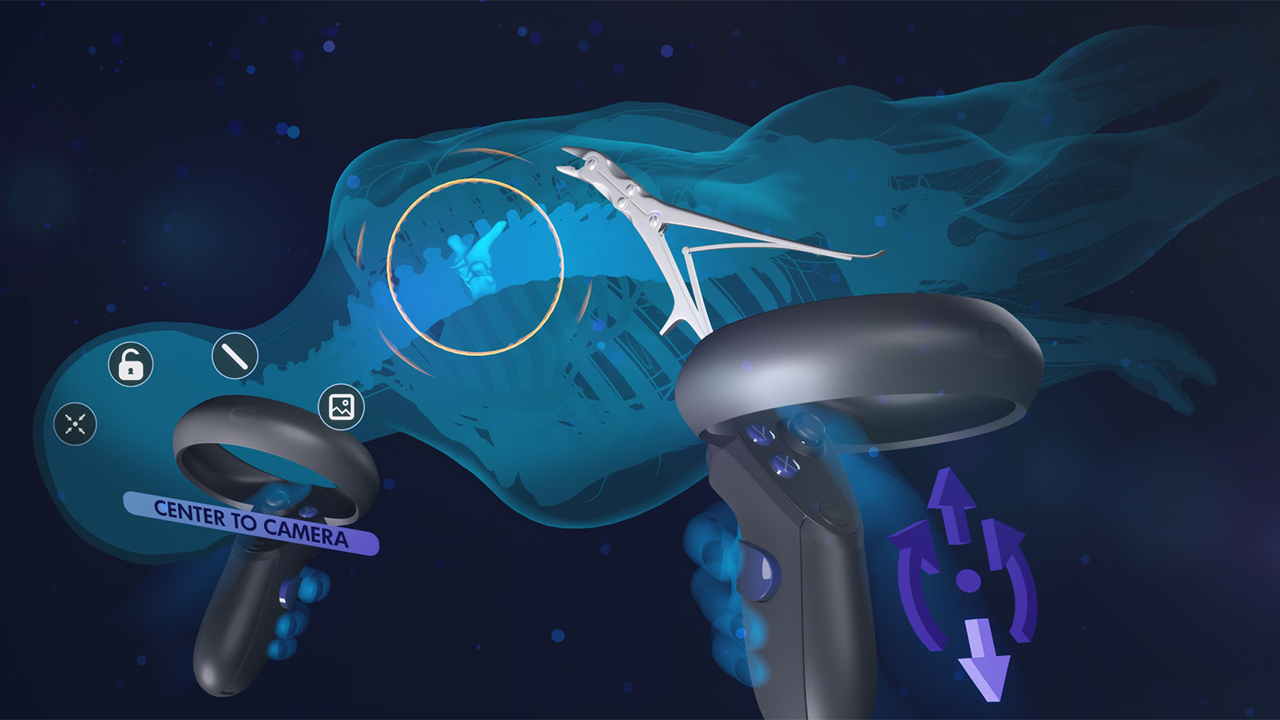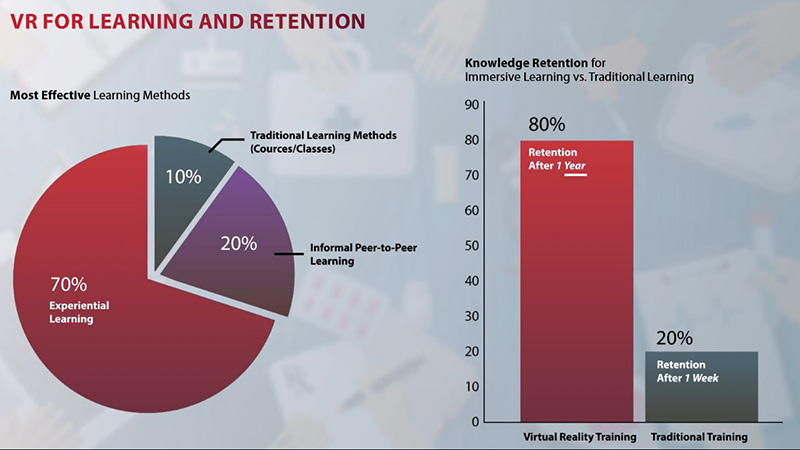Training in Virtual Reality

Businesses are, in a large part, just a body of people all working together to reach a collective goal. That’s why they’re called organizations, after all. But how does one help guide employees, both new and old, to get on the same page? Workplace training is paramount to any company for this exact reason, though the methods in which each business conducts their training is vastly different.
- Do you send your company’s newest brand guidelines through a widespread email, asking everyone to read the document through at their earliest convenience?
- Is there a smaller team, more hands-on with this in their everyday tasks that need an in-person meeting on these updates?
- What about a webinar along with the announcement, so your offices across the world might have a chance to sit in on the presentation?
- How do you get your employees, new and old alike, excited about these changes and interested in said seminar?
It’s clear there isn’t a single right tool for the job, and with so many different factors at hand, it can be hard to identify the viability of newer technologies within the amalgam of pre-existing tools.
Virtual Reality hopes to carve out its own niche within the world of enterprise, though this (admittedly eccentric) device’s potential can be puzzling to unpack. The question then remains for many, where does Virtual Reality shine within enterprise training? Our team at Elara is here to help alleviate the unknown, by showcasing four ways in which VR Training excels amongst its peers:
Promoting the Future
Tech-forward businesses understand the value of cultivating their company’s identity early on in the career of new hires. While wheeling out a CRT tv and slapping in an hour-long VHS tape of an employee welcome video may have worked in the 1980s, it would set a tone for new-hires who are just entering your business. In this way, the technology utilized during training has an important impact in the representation of your business. Admittedly, the cutting-edge of Virtual Reality headsets might be considered excessive for many, but it finds its niche within tech-forward companies hoping to push their brand. Employees are quickly brought to understand the direction of a company that endorses VR technology, while also presenting the company in a tech-progressive stance by onlookers and competitors alike.
No Stones Unturned
Virtual Reality is a medium that specializes in visualization, replacing both sight and sound with fully realized and virtual surroundings. This space can be filled with anything, allowing you to take your employees any place you’d like. Do you need to give your sales team an in-depth tour through your product’s assembly line? Capture devices can record footage in 360-degree stereoscopic vision, allowing you to capture real-world places and bring them directly to your headquarters. Direct to headset video is just the surface of VR’s capabilities, as high-end headsets are used to power state of the art simulations and 3D explorations. Complex anatomies, long since bound to physical replicas and depictions on flat screens are given new life through VR. Fully virtual, easily-replayable scenarios are at your disposal through VR, giving you a chance to play through test environments and simulations without the worry of expense-draining setup.
The (Simulated) Human Experience
It can be easy to look at VR and assume that it holds a similar impact to other mediums, such as videos or interactive screens. However, VR offers an undeniably human element to your training. Standing in a virtual space, surrounded by a fully interactive environment engages a user beyond idle viewing of a screen. There is a sense of space and depth that is essential to being ‘present’. Users in headsets can easily occupy the same space, using head and hand tracking to help represent their presence through VR avatars. Entire conversations can be had with two occupants halfway across the world from one another, yet the two can still share the same virtual conference space. While the impact of this human element seems small on paper, it’s integral to the identity of this tool. It isn’t just a screen, or a video. VR is a tool for empathy via physical-representation, allowing us to extend our senses to feel like we’re somewhere else. The doors to how we engage with the world around us are continuing to broaden, and VR has opened an avenue to bring fully realized virtual environments to the world of mainstream learning.
Retention Rates
Learning by doing is an incredibly valuable way of processing and remembering the information you’ve received. The immersion of VR and its ability to simulate situations using spatial awareness creates an environment that is perfect for ‘learning by doing’. In a study carried out by the National Training Library, retention rates for lecture-style learning were at 5% and reading rates were at 10%, while the method of VRLearn had a retention rate of 75%, which allows learners to make critical errors and experience the results in a safe environment.1 VR combines the structure of easily repeatable and guided practice with elements of real-word experience to create an experience that makes learning feel secondhand.
No, VR isn’t going to eradicate your conference calls and monthly webinars. Pdfs and PowerPoint documents are still integral to your office, and you’re not likely to start having every meeting take place in VR. However, VR is entering the world of enterprise training, and it has found its niche within digestible, 5-10 minute training simulations. It allows users to quickly adjust, and better retain the motions of their new job, while simultaneously broadening the range of what would be feasible within a real-world training seminar. Computer simulations and training seminars will see new light in this hardware, and open up a whole new avenue for the production of experiential training.
VR and interactive production has been an important part of Elara System’s development over the past two years. We are constantly evaluating the latest and greatest technology in an effort to ensure stunning and effective digital content. From 3D animations to interactive media, Elara specializes in understanding and developing the right solution to meet your needs. If you are interested in hearing how we can bring your ideas to life, contact us today!
Reference: Virtual Reality Learning report by Masie.com



